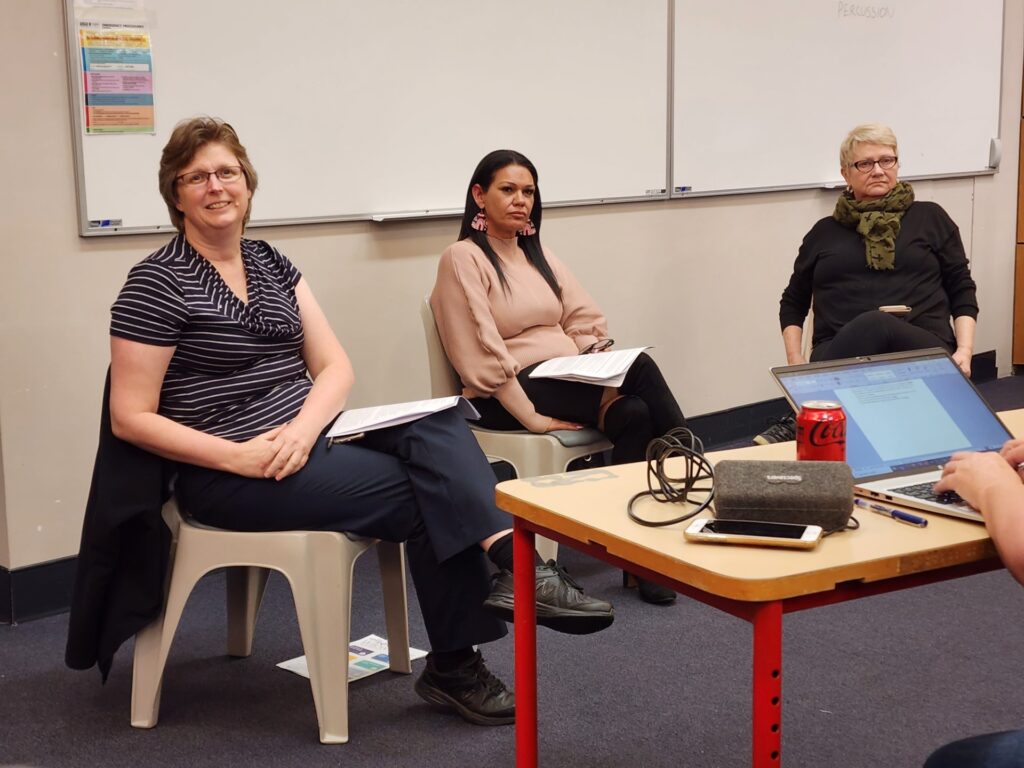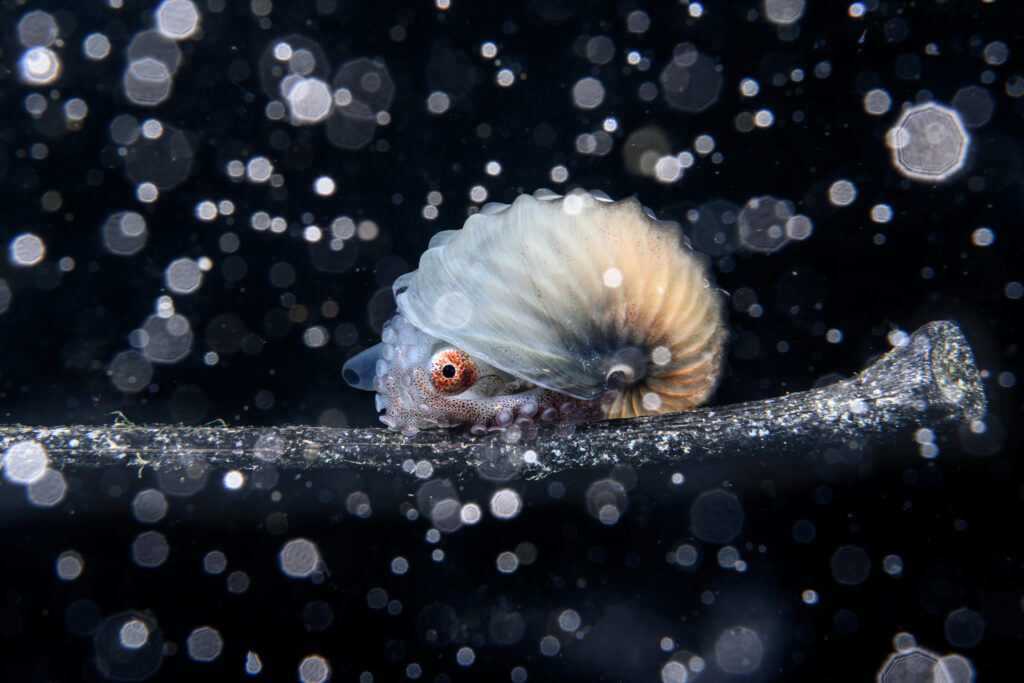Significant numbers of women who are the victims of domestic violence are misidentified as the primary aggressor when they are extremely vulnerable, according to the Women’s Legal Service, and this is particularly the case for Indigenous women.

By Jacquelene Pearson
Gail Thorn travels NSW to support and advocate for Indigenous women who are domestic violence victims. The Women’s Legal Service representative has clients in 40 towns and runs outreach across Western Sydney every fortnight. The service offers a telephone advice line between 10am and 4pm every Monday, Tuesday and Thursday.
Calls are always answered by an Indigenous person and the advice provided is holistic and culturally appropriate and safe.
Gail Thorn and her colleague Liz Snell have been invited by the Central Coast Domestic Violence Committee (CCDVC) Inc to talk about the misidentification of women who are victims of domestic violence as perpetrators.
“I grew up with misidentification,” says Thorn. It remains a common consequence for Aboriginal women who turn to the system – police and the courts – seeking support to get out of abusive relationships. She says a common scenario is when a dark Aboriginal woman is with a light or non-Indigenous partner.
“When the police arrive they automatically think that the black person is the perpetrator,” Thorn says. She recalls one incident where the female victim had recorded her partner’s violence so there was proof of what she’d been through. Rather than believe the woman and charge the man with breaching an Apprehended Violence Order (AVO), the police “put an AVO on her”.
The Women’s Legal Service attempts to defend the woman and have the AVO dropped but the situation is too traumatic so the woman ends up accepting the AVO. Thorn says this common scenario stems from victims being seen as “black first, then a woman”.
“We are not an ideal victim. When the police turn up we are not in a corner crying. We are strong women. Of course we are angry. We have put up with being called a ‘black c__nt for a week,” she says.
She has seen misidentification in the courts. A common scenario is when two families are before the family court with exactly the same circumstances. The black children are removed from their parents’ care. The white children stay with their parents. Race is the only differentiator, says Thorn. When working as a court support person, lawyers representing women defending AVOs have assumed Thorn is the client because she is Aboriginal.
And this type of misidentification happens to other minorities too, in addition to Aboriginal women. Ethnic minorities, those with disabilities and members of the LGBTIQA+ community also bear the brunt of system abuse in the form of misidentification as perpetrators when they are, in fact, victims.
A continuum
Liz Snell, who is Law Reform Policy Coordinator for the Women’s Legal Service, says misidentification of the predominant aggressor is not new or something that can be looked at in isolation. Snell says it is “part of a continuum”.
A woman victim goes to the police and requests that action is taken. Nothing is done because the woman is identified as the aggressor. “We do acknowledge that women can be violent and men can be victims,” says Snell. However, she argues that misidentification is a major factor in the criminalization of Indigenous women.
She says the Women’s Legal Service has a proud 40-year history including the establishment of an Aboriginal Women’s Consultative Network that started in 1995 with representatives from communities across the state who continue to meet quarterly to discuss the issues in their areas.
Acknowledging the importance of education and access to plain English resources, Snell says the Women’s Legal Service continues to do law reform work in collaboration with a whole range of people.
She argues that Australia has followed the same path as the United States by favouring mandatory arrest policies as a way to stop DV culprits from reoffending based on research conducted in the 1990s and 2000s. The research has since been replicated but the finding that arrest stops recidivism has not.
In fact, Snell and Thorn argue that arrest has the greatest impact on Indigenous women and other vulnerable cohorts. In fact research conducted in 2020-21 found that almost 50% of women killed by a partner had protection orders out AGAINST them.
Solutions
The Victorian Royal Commission into Family Violence resulted in the establishment of a Family Violence Reform statutory body which cited 16 concrete ways to detect institutionalized misidentification.
One indicator is if the man becomes emboldened when he is able to convince the police that he (the perpetrator) is, in fact, a victim. This feeds “gender symmetry” and the idea that women are just as violent as men which has contributed to the ‘men’s rights movement’.
However, according to Thorn and Snell, when you drill down you find that women mostly commit retaliatory violence in the form of biting and scratching which is indicative of self-defence. However, because our criminal system has a bias towards criminal violence, the woman can be misidentified as the perpetrator simply because she draws blood.
“Research shows again and again and again that as first responders we have a perception of a so-called ‘ideal victim’ and women don’t always fit that description, especially when they fight back or when they are mouthy,” says Snell.
She says the NSW Crimes Domestic and Personal Violence Act is a domestic violence offence-based act. It views any offence in a domestic relationship, including carers and flatmates as domestic violence and that means it captures retaliatory acts as domestic violence offences, leading to misidentifications.
“We want a broad definition but we don’t want it to capture retaliatory or self-defence,” Snell says.
The Women’s Legal Service has been collecting and analysing data on misidentification since around 2005 when they noticed an increase in the number of women defending AVOs.
There was an inquiry into this phenomenon in 2011 and research using police data was published in 2021. In 2014 the Women’s Legal Service published a reflection on its case work from 2010. It was a small sample size but of 93 women, 2/3 who had AVOs taken out against them had spoken about a history of violence whereas 68% of the women had committed a single act of violence. Around one third of the women did not want to even try to defend the AVO, “they just wanted it to be over” which, according to Snell and Thorn was another indicator that their offence had been an act of self-defence.
“When the police were called the women felt that they were perceived as not being credible,” says Snell.
They were described as hysterical and not believed or because they came from non-English speaking backgrounds they were not believed. Thorn and Snell point this out as “system abuse”. The male perpetrators are very effective at image management and convince the police that they are concerned for their partner’s mental health and capacity to look after the children.
One of the ways to fix this misidentification problem may be crime prevention training for police and legal practitioners that would need to be codeveloped and codelivered by experts. Culture within institutions like the police service would also need to be reformed and there would need to be independent evaluation of the effectiveness of any training offered and its impact on actual practices.
Removing conscious and unconscious bias from “echo chambers” like the police service is likely to be a long and arduous process for reformers. The Women’s Legal Service representatives say there will need to be regular and independent auditing of police responses to domestic violence.
Inaction
Of course there have already been such reports – a 2000 Ombudsman report on police responses but nothing happened as a result of its release. Likewise subsequent reports including a NSW Auditor General Progress report that has not been released yet.
One wonders why successive governments continue to spend more money on reports and inquiries when the recommendations are never implemented. It appears that no one is being held accountable for the lack of action to solve this misidentification problem. It is a problem that can take a woman from a relatively quiet life to criminalization very quickly.
It happens like this. A woman finally makes a scary decision and calls the police in an effort to put a stop to her partner’s violence. She tells them, “He was choking me so I spat in his face.” At that moment the woman is told that her spitting is assault and she is jailed for the night.
Another woman might have a mild cognitive disability. She finds it almost impossible to get the AVO process going at all. She convinces herself that because her perpetrator is not punching her, he is not harming her. She doesn’t see herself as a victim and, so, falls through the gaps.
Gail Thorn says she knows of a woman who was “lost in the system for 20 years and lost children because she was living in circumstances that were not suitable for children” but she did not even have the self-confidence to recognise herself as a victim.
Thorn and Snell agree there needs to be work done to screen police candidates for biases and recruitment strategies need to be overhauled. Reward systems also need to be considered so those police who are doing the right thing are acknowledged for their good work.
Police recruits need to understand that, in the uniform ranks, 80 per cent of their work is going to be related to domestic and family violence. Placing Indigenous women in leadership roles in policing and law – and making sure they are valued in those roles – is another potential solution.
“We don’t trust the police as it is,” says Gail Thorn. We all know the reasons – historical reasons. Police are called. A woman is misidentified and her children are removed. Can you imagine that?” she says. The risk of having children taken away is a major factor that stops Aboriginal women from reporting domestic violence, Thorn adds.
“That is our biggest fear. That is why Aboriginal women don’t report. We are not going to put our kids at risk,” she says.
Hope
A program being piloted in NSW is probably the most positive initiative currently in play to overcome misidentification of women victims as culprits. Police have to consult an expert before they can put a woman into the COPS system as a perpetrator. They have access to specialist DV workers who are based on policy stations.
Thorn says she has seen cases where a woman has walked out of the police station with the AVO against her dropped, charges dropped and an AVO placed on her partner.
The program has been running across five sites since 2022 and is funded through to 2024. It will then be independently evaluated by the University of Wollongong.
Find out more at https://www.wlsnsw.org.au/


